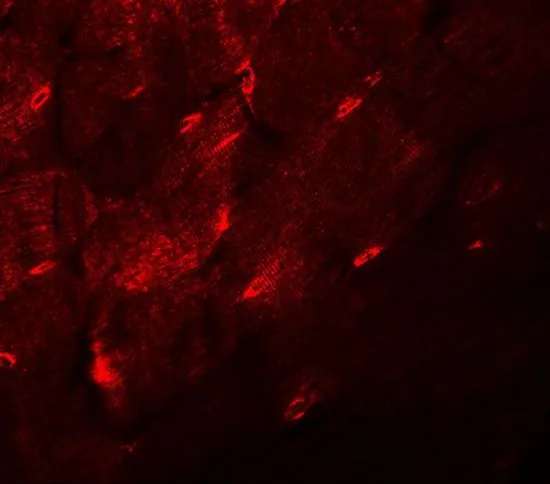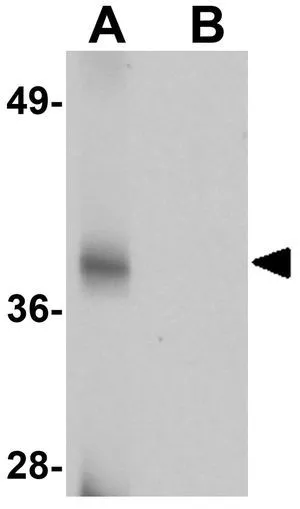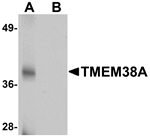
IHC-P analysis of mouse skeletal muscle tissue using GTX85221 TMEM38A antibody. Working concentration : 20 microg/ml
TMEM38A antibody
GTX85221
ApplicationsWestern Blot, ELISA, ImmunoHistoChemistry, ImmunoHistoChemistry Paraffin
Product group Antibodies
TargetTMEM38A
Overview
- SupplierGeneTex
- Product NameTMEM38A antibody
- Delivery Days Customer9
- Application Supplier NoteWB: 1 microg/mL. IHC-P: 20 microg/mL. *Optimal dilutions/concentrations should be determined by the researcher.Not tested in other applications.
- ApplicationsWestern Blot, ELISA, ImmunoHistoChemistry, ImmunoHistoChemistry Paraffin
- CertificationResearch Use Only
- ClonalityPolyclonal
- Concentration1 mg/ml
- ConjugateUnconjugated
- Gene ID79041
- Target nameTMEM38A
- Target descriptiontransmembrane protein 38A
- Target synonymsTRIC-A, TRICA, trimeric intracellular cation channel type A
- HostRabbit
- IsotypeIgG
- Protein IDQ9H6F2
- Protein NameTrimeric intracellular cation channel type A
- Scientific DescriptionTMEM38A and TMEM38B are two recently identified trimeric intracellular cation (TRIC) channel subtypes. TMEM38A is preferentially expressed in excitable tissues such as striated muscle and brain and localizes to the sarcoplasmic reticulum (SR) in muscle tissues. Mice deficient in both TMEM38A and TMEM38B suffer embryonic cardiac failure; the cardiac myocytes display severe dysfunction in SR Ca2+ handling, weakened Ca2+ release, and reduced K+ permeability indicating that the TRIC cation channels are likely to act as counter-ion channels that function in synchronization with Ca2+ release from intracellular stores. Other experiments have shown that TMEM38A and TMEM38B can act with junctophilin proteins to support efficient ryanodine receptor-mediated Ca2+ release in muscle cells.
- Storage Instruction-20°C or -80°C,2°C to 8°C
- UNSPSC12352203





